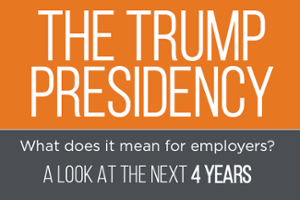 During the next few weeks the Minimal Essential Coverage 1094-C and 1095-C reporting cycle starts all over again for the 2016 calendar year. It doesn’t matter whether President Trump and Congress repeal, replace, repair, refine, re-tool, reform, revise, remedy, remake, reconstruct, or rework the Affordable Care Act (ACA). If you are an Applicable Large Employer (ALE), then get ready to report.
During the next few weeks the Minimal Essential Coverage 1094-C and 1095-C reporting cycle starts all over again for the 2016 calendar year. It doesn’t matter whether President Trump and Congress repeal, replace, repair, refine, re-tool, reform, revise, remedy, remake, reconstruct, or rework the Affordable Care Act (ACA). If you are an Applicable Large Employer (ALE), then get ready to report.
C Reporting Basics
Let’s review the C reporting basics. Under Section 6056, all ALEs are required to report information about offers of health coverage to their employees. If you have a self-funded plan, you also use the C forms to report coverage information on all of the individuals (spouses and dependents) enrolled in your health Plan. Regardless of whether you have a self-insured or fully insured plan, all ALEs are required to file 1094/1095-C forms. If you are an ALE and do not offer health insurance coverage you are still subject to 6056 reporting and expect to receive an excise tax.
When you filed last year, you probably experienced quite a few hurdles as there was little or no guidance from the government on the issues and questions that occurred with this new requirement. This year there is a bit more guidance, but it will still be confusing, so we wanted to help you with some of the more baffling parts of the reporting requirements and hopefully make this process just a little less frustrating.
The 1094-C
The 1094-C is the transmittal form that is sent with your 1095-C forms when they are submitted to the IRS. It is a four part form that is relatively straightforward. Be sure to include the names and identities of all controlled groups, if any, in Part IV.
Line 22 in Part II is probably the most complicated question. This line is used to indicate eligibility for one or more types of reporting relief. This line is only used if you want to take advantage of one of the relief options. We recommend that you become familiar with the various forms of relief available before actually take the time and effort to determine if you can qualify for the relief. This step may help you decide if making that effort will be of any value.
The 1095-C
The 1095-C is unique to the employee/participant and is required for each full-time employee (e.g., anyone who works 30 or more hours per week during the prior measurement period). Also if you have a self-insured plan, a 1095-C is needed for all individuals enrolled in the plan who are not full-time. It is important to clarify that only those part-timers enrolled in the plan need a 1095-C; otherwise you just need to worry about the full-time employees.
Part II of the 1095-C
Some of the most confusing parts of the 1095-C are in Part II. The lines typically generating the most confusion are Part II Lines 14, 15 and 16. This Part requires you to understand the various types of codes that exist to report the different type of coverage “offers” and any potential “relief” options.
Offer of Coverage Code – Line 14
On Line 14 you enter the code that matches the offer an ALE made to the employee on a month-by-month basis. Line 14 is mandatory, and it must have a code entered. In many cases it is relatively straightforward, for example, an employee is employed for the entire year and received an offer at the beginning of the year, enrolled in coverage and there were no changes during those 12 months. In this instance, you can use one code for all 12 months because there were no changes to that employee’s “offer” throughout the year.
It becomes much more complicated if you hire a new employee, terminate or rehire employee or if the go from part-time to full-time because the code will change by month depending on the circumstance. There are 11 different offer codes for 2016, however the IRS threw in another loop- Code 1I cannot be used- so you essentially you have ten code options available.
Employee Required Contribution – Line 15
Line 15 is used to determine the affordability of the coverage offered. In Line 15 you report the amount the employee would have to pay for the lowest cost plan available that meets the Minimum Value Coverage requirements. It is important to note that this may not be the actual coverage in which the employee enrolled.
Line 15 is required to be completed when using the codes 1B, C, D, E, J or K on Line 14. If you use any of the other codes on Line 14, then leave Line 15 blank, because the IRS does not need to make an affordability determination.
Section 4980H Safe Harbor and Other Relief Codes – Line 16
Line 16 is used to provide a reason why a member is not liable for a 4980H(b) penalty. Line 16 is not required, and it will depend on the code you used on Line 14. Line 16 provides supplemental information to substantiate why a penalty should not apply to that particular employee’s offer or lack of an offer. Some situations that may require a code include:
- If the employee was full-time for at least one month during the year and was enrolled in the coverage for each day of the month then code 2C applies
- If an employee offer was not required and you use codes 2A, B, D, or E. For instance, Code 2A is used for months when an employee has coverage under COBRA.
- In circumstances in which the affordability of the offer is questionable based on the figure reported on Line 15, you might use codes 2F, G, or H. Those codes are generally used when affordable coverage is offered and the coverage was waived by the employee.
.png?width=69&height=53&name=Acrisure%20Logo%20(White%20Horizontal).png)


